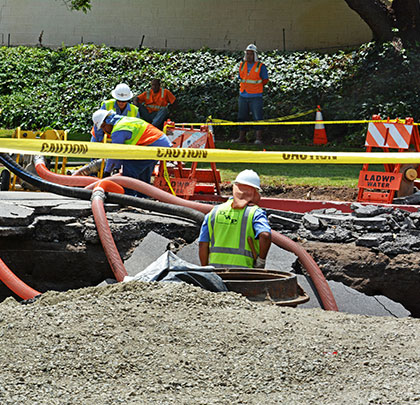Aclara has been a leader in smart infrastructure solutions to electric, water, and gas utilities for years, and the company recently formed a strategic alliance with Valor Water Analytics, a developer of advanced meter analytics for water utilities, to help water utilities reduce non-revenue water losses by analyzing data collected by advanced metering infrastructure systems. Below, Allan Connolly, president and CEO of Aclara, shares his concerns on the problem of water loss and how his company’s new partnership can present a solution.
MPT: How pervasive is the problem of apparent water loss in the domestic water utility system?
Allan Connolly: It’s difficult to accurately assess how much of the water that is pumped into a utility’s distribution system is lost before it is metered, but the Environmental Protection Agency puts the number at 16 percent, and some experts’ estimates are even higher. In any case, there are basically two ways to lose water before it is metered. One is through leaks in the distribution system, called real losses. The other is through water that is consumed but not paid for, called apparent losses.
Real losses drive up production costs and force water utilities to pump more water than customers need. This drives up the costs of operations by forcing the utility to pour money into infrastructure repairs. But apparent losses caused by inaccurate meters, theft, or billing problems occur at the final retail cost of water. They reduce your ability to collect all the revenue owed and so directly affect the bottom line.
MPT: What are the leading causes of apparent loss, and what can be done about them?
Allan Connolly: AWWA lays out three main causes of apparent loss in water distribution. The first is unauthorized consumption—in a word, theft. Stealing water is easier to control in utilities that have implemented advanced metering infrastructure (AMI), because the data collected by AMI can be analyzed to identify suspicious patterns of consumption. In addition, the AMI system can send the utility a tamper alert if a customer tries to disconnect or route around a meter.
The next leading cause can be attributed to data handling errors. Meter reading, billing, and archiving errors contribute to apparent water losses by reducing the amount of revenue collected by the utility. AMI solutions, which read meters automatically, combined with Customer Information Systems and Meter Data Management to ensure the integrity of data used for billing by reducing the errors that occur when data is provided by meter readers or entered manually into the billing system.
Finally, inaccurate meters are a problem. Meters that are not registering properly, either because they are failing or improperly sized, are a source of apparent water loss that is difficult to quantify without analytics. Short of pulling meters out and bench-testing them, it is difficult to determine if they are dying or decaying. Plus, when meters are incorrectly sized for the type of service needed (commercial or residential, or vice-versa), they will erroneously register water usage.
MPT: How does Aclara’s new partnership with Valor Water Analytics benefit customers?
Allan Connolly: The alliance between Aclara and Valor will allow utilities to make analytics an integral part of their AMI strategies for boosting revenues and reducing water losses. Our relationship with Valor also supports our goal to become the leading end-to-end provider of smart infrastructure solutions to utilities. Analytics can help utilities recover from 1 to 5 percent of top line revenue that is now being lost in their systems through apparent losses, as reported by Valor. For a $100 million utility, that amounts to one to five million dollars a year.
In fact, dying meters, which always under-register to the utility’s detriment, are usually never found unless they fail. And although most utilities conduct periodic meter replacement programs, faulty or incorrectly sized meters may be in place for years, which results in the utility not collecting all of its revenues. Plus, analytics programs can pinpoint bad or incorrectly sized meters, allowing utilities to find faulty meters faster and take a more surgical approach to meter replacement. ◆
____________________________________________
MODERN PUMPING TODAY, June 2017
Did you enjoy this article?
Subscribe to the FREE Digital Edition of Modern Pumping Today Magazine!
![]()


